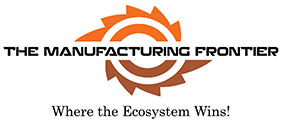“The Indian manufacturing sector continued to expand in August, although the pace of expansion moderated slightly. New orders and output also mirrored the headline trend, with some panellists citing fierce competition as a reason for slowdown. Nevertheless, all three indicators remain well above their historical averages.” Pranjul Bhandari, Chief India Economist at HSBC
Indian manufacturers registered softer increases in new business and output during August, albeit with rates of expansion remaining elevated by historical standards. Business confidence retreated, but firms scaled up buying levels in a bid to safeguard against input shortages. The latest upturn in pre-production inventories was one of the strongest seen in 19-and-a-half years of data collection. One factor that supported the rise in purchasing activity was a moderation in cost pressures. The rate of input price inflation softened to the slowest in five months. Concurrently, demand resilience meant that firms were comfortably able to share additional cost burdens with their clients by lifting selling prices. The seasonally adjusted HSBC India Manufacturing Purchasing Managers’ Index™ (PMI®) stood at 57.5 in August, below July’s reading of 58.1 but above its long-run average of 54.0, signalling a substantial improvement in operating conditions. New business rose sharply midway through the second fiscal quarter, but the pace of expansion eased to a seven-month low. Panel members attributed the increase to advertising, brand recognition and healthy demand trends. Competitive conditions reportedly dampened growth. New export orders likewise increased at the weakest pace since the start of the 2024 calendar year. Yet, one-in-ten firms noted an improvement in international sales, which they associated with stronger demand from Asia, Africa, Europe and the US. Although output continued to rise at a historically sharp pace, the rate of expansion moderated to the slowest since January. On the one hand, some panellists indicated that greater sales volumes and investment in technology supported production. On the other hand, a few companies suggested that fierce competition and shifts in consumer preferences negatively impacted output at their units.
Pranjul Bhandari, Chief India Economist at HSBC, said: “The Indian manufacturing sector continued to expand in August, although the pace of expansion moderated slightly. New orders and output also mirrored the headline trend, with some panellists citing fierce competition as a reason for slowdown. Nevertheless, all three indicators remain well above their historical averages. On a positive note, the rise in input costs slowed sharply. Manufacturers increased their raw material buying activity in order to build safety stocks. In line with input costs, the pace of output price inflation also decelerated, but the deceleration was to a much smaller extent, thereby increasing margins for manufacturers. Business outlook for the year ahead moderated slightly in August, driven by competitive pressures and inflation concerns.”
Goods producers benefited from a moderation in cost pressures during August. Purchasing prices still rose, but did so to the weakest degree in five months. Firms that observed an increase remarked on greater leather, mineral and rubber costs. With input cost inflation receding, goods producers sought to rebuild safety stocks by purchasing additional raw materials and semi-finished goods. The rate of input buying growth was sharp and the strongest since April. Not only did input inventories increase further in August, but also to one of the greatest extents seen in 19-and-a-half years of data collection. Underlying data showed that a lack of pressure on supplier capacity facilitated manufacturers’ stock-rebuilding efforts. Input lead times shortened for the sixth straight month in August. Goods producers also indicated that backlogs of work were broadly unchanged since July. Job creation softened midway through the second fiscal quarter as a few firms trimmed headcounts. Nevertheless, the overall rate of employment growth was solid in the context of historical data. Despite the slowdown in cost pressures, there was a marked increase in prices charged for Indian goods in August. The rate of inflation was the second-fastest in close to 11 years. Firms reportedly shared additional cost burdens with their clients amid demand resilience. Finally, competitive pressures and inflation concerns hampered business confidence in August. Panellists were at their least optimistic since April 2023.
Source: S&P Global

